How To Do More Pull Ups Workout
How to do more pull-ups the workout
Today I'm going to show you how to use density training to do more pull-ups, and not only that, but you can use this method to increase the number of reps you do on push-ups, pistol squats, and it will help you blast through any weight training plateau you might have. So it will be worth it to stick around for the whole video.
First, though, I want to start with those who either can't yet do a pull-up or only can do a couple with questionable form.
If you are interested in losing body fat and adding muscle, please email me at 1shark1bite@gmail.com for information on my personal training services.
Check your testosterone levels from home. Just click this link http://trylgc.com/laurence and receive 20% off with code: LAURENCE20 I receive commissions on referrals to LetsGetChecked. I only recommend services I know and trust.
Facebook; https://www.facebook.com/Fit-and-50-5...
My Amazon page link; https://www.amazon.com/shop/fitand50
My Affiliate link to Lebert for their Equalizer bars and more; https://lebertfitness.com/?ref=hmkesu... and use the discount code FITAND50 you will receive 15% off your purchase
A potential weak link is grip strength. An excellent way to test and progress your grip strength is dead hangs. See if you can hang for at least ten seconds, then slowly increase the time until you can hang for sixty seconds. If you can’t hang for even ten seconds, then we need to work on grip strength.
An exercise that will help with grip strength is the farmers walk. Providing you have access to heavy dumbbells, if not, then I would suggest an inverted row. You can usually find an appropriate height bar at a park, or you can set something up with a couple of chairs and a strong handle. You can hang from this or, better yet, do inverted rows, which will strengthen not only your grip and core stability but also your mid and low traps, which play a vital role in the early part of the pull-up.
Once you can hang for over ten seconds, the next step can be done while increasing your hang time. And that is scapular pull-ups. For these, once you're in the dead hang, relax your shoulder blades and let your shoulders go up and out. Then pull your shoulder blades down with your arms remaining straight.
I like to add one more step to this move to make it even more effective at targeting the middle and lower traps, and that is to pull my shoulder blades not just down but back too and really squeeze those blades together. Build these up to 3 sets of 10 to 15 reps, and you should do your pull-up training at least 2 to 3 times a week.
Next is band-assisted pull-ups.
Before we go any further, I want to talk about hand positioning and range of motion. The wider your hands are apart, the more challenging the pull up is. So if you are just starting, keep your hands shoulder-width or just a bit wider.
For a range of motion, you want your arms straight in the bottom position. At the top, your chin has to pass the bar with your chest touching it.
I like to do negative reps and assisted pull-ups, but if you don’t have the ability to do an assisted pull up, you can just do negatives instead. Start by using a step to get you to the top position and then slowly lower yourself down, working up to a 30-second negative. I would do these at the very end of your pull workout as they can fully exhaust the working muscles. Shoot for 3 to 4, 30 second reps reducing the rest time between reps as you improve.
Every couple of weeks, test your progress once you can do one pull up with good form. Then the best way to progress is to set up a pull-up bar in your house, and every time you go by it, do one rep.
Eventually, you will find yourself hitting a plateau. This is when it's time to switch it up, and I recommend density training. To set this up, you start with your goal number of pull-ups.
For this example, we are going to use the goals of either 10 or 20 perfect repetitions. What you do is take your goal number and double it.
So if your goal is 10 perfect reps, then you will do 20 repetitions per session, and for the goal of 20, you would do 40. You do one set every minute on the minute for 20 minutes. For a 10 rep goal, you would do one repetition every minute, and for 20, 2 reps.
Once you can do this with perfect form, it is time to shorten the workout by adding one rep to each set. Keeping the total number of reps per workout the same but reducing the number of sets. Those with a 10 rep goal will be doing 10 sets of 2 reps, and those with the goal of 20 will be doing 14 sets of 3 reps. The total number of repetitions never changes, just the amount of time it takes to do them.
You keep reducing the number of sets and increasing the number of reps as you perfect each level until you’ve reached your goal number of repetitions.
You should test your max number of reps once you have perfected a level and before you increase the number of reps per set.
-
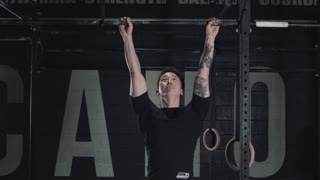 0:28
0:28
john_ventresco
4 years agoPull- Ups Training
79 -
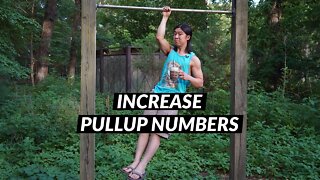 9:57
9:57
Hybrid Calisthenics
2 years agoHow to Do More Pullups
74 -
 4:05
4:05
Turbulence Training
1 year agoHow to do more pushups
59 -
 6:38
6:38
Turbulence Training
1 year agoBODYWEIGHT WORKOUT
94 -
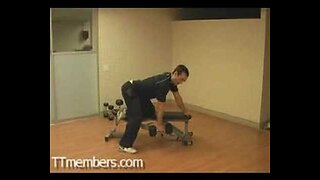 6:01
6:01
Turbulence Training
1 year agoupper back exercises
28 -
 10:41
10:41
GymnasticsMethod
2 years agoHow to do Push-ups in 2022
7 -
 0:24
0:24
Dave Gamba Fitness
7 months agoPULL UPS EXERCISE
-
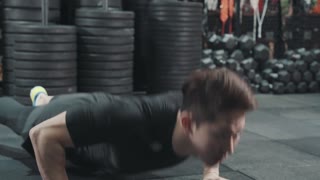 0:14
0:14
john_ventresco
4 years agoTrain 1 (Push Ups)
105 -
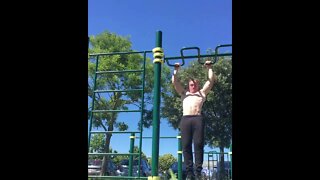 0:18
0:18
ASJSportTraining
1 year agoINCREDIBLE PULL UPS #calisthenics
21 -
 0:15
0:15
magdy
5 years agoPush-ups exercise
1.41K